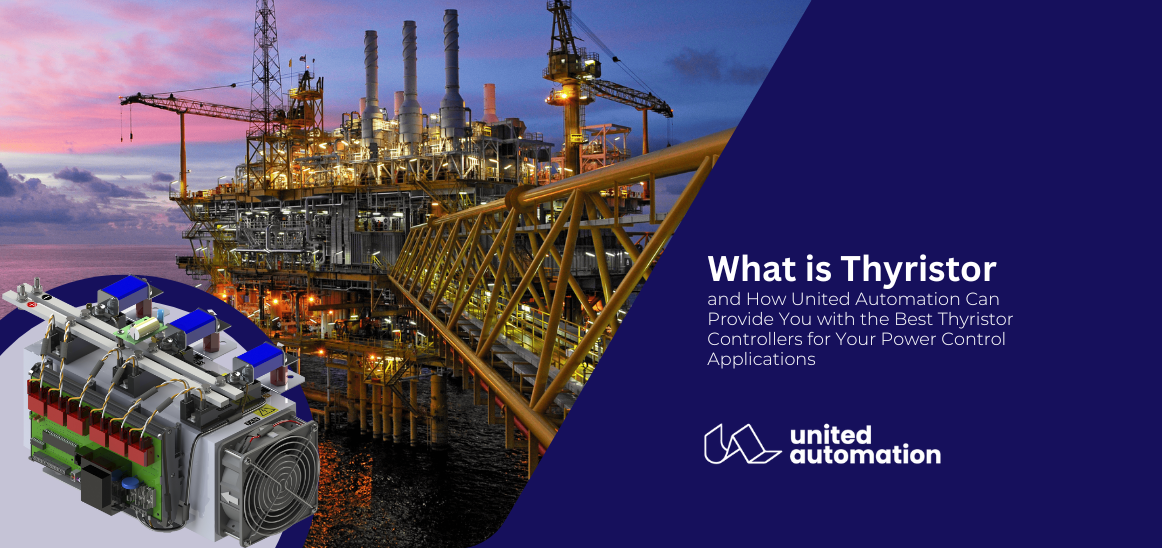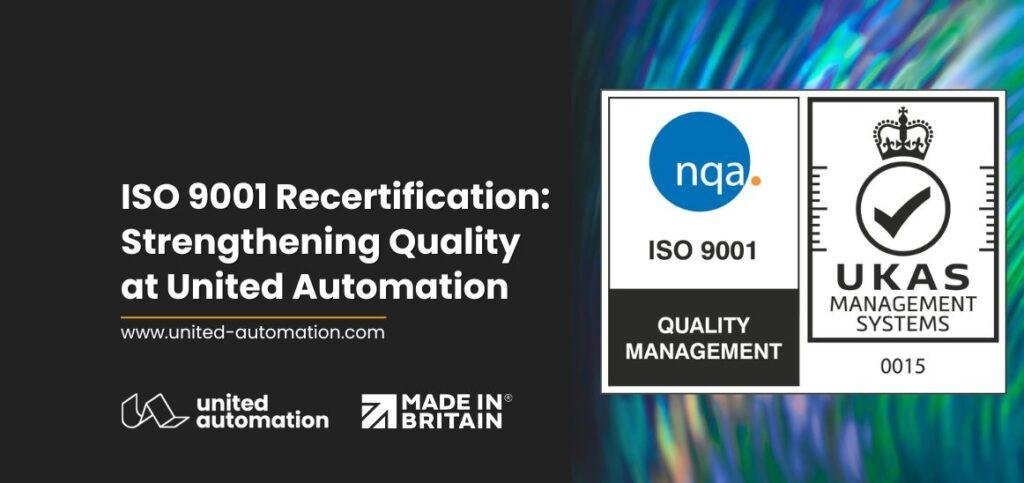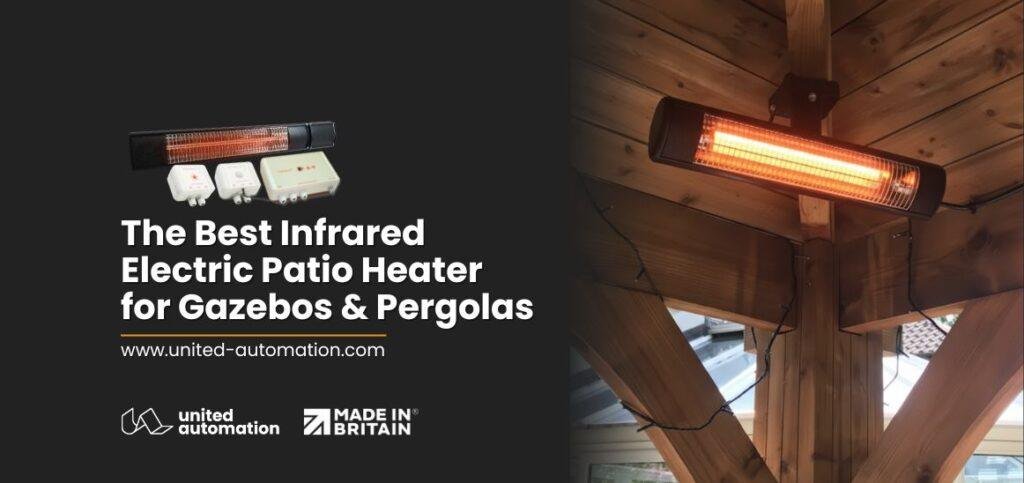How to Reduce Gas Emissions with Thyristor Controllers from United
Discover how United Automation’s Thyristor Controllers can help your manufacturing facility reduce gas emissions and enhance energy efficiency. Learn about their…
FREE DELIVERY ON ORDERS OVER £50 IN THE UK & EU
FREE DELIVERY ON ORDERS OVER £50 IN THE UK & EU

If you are looking for a reliable and efficient way to control the power flow to your industrial machines and equipment, you may want to consider using thyristor controllers. Thyristor controllers are electronic devices that can regulate the amount of power supplied to your load, ensuring optimal performance and energy savings. This article will explain what thyristor is, how thyristor controllers work, and how United Automation can provide you with the best thyristor controllers for your power control applications.
A thyristor is a semiconductor device that acts as a switch. It can turn on and off to control the amount of power supplied to the load. However, unlike a normal switch, a thyristor can only pass current in one direction. It is also known as a silicon controller rectifier (SCR).
A thyristor has three terminals: anode, cathode, and gate. The anode and cathode are connected to the power source and the load, respectively. The gate is connected to a control signal that triggers the thyristor to turn on or off.
To turn on a thyristor, a positive voltage pulse is applied to the gate. This causes the thyristor to conduct current from the anode to the cathode. Once the thyristor is turned on, it will remain on until the current drops below a certain level or the voltage across the device becomes zero.
To turn off a thyristor, the current or voltage must be reduced to zero. This can be done by interrupting the power supply or by using another device to bypass the current from the thyristor. Alternatively, a negative voltage pulse can be applied to the gate to force the thyristor to turn off.
Thyristor controllers use one or more thyristors to control the amount of power supplied to the load. They can adjust the phase angle of the alternating current (AC) voltage supplied to the load, allowing for fine control of the power delivered.
The phase angle is the angle between the voltage waveform and the current waveform. By changing the phase angle, the thyristor controller can vary the effective voltage and current supplied to the load. For example, if the phase angle is zero, the thyristor controller will supply full power to the load. If the phase angle is 90 degrees, the thyristor controller will supply no power to the load.
The phase angle can be controlled by adjusting the timing of the gate signal applied to the thyristor. The gate signal is synchronized with the AC voltage waveform and determines when the thyristor will turn on or off. By delaying or advancing the gate signal, the thyristor controller can change the phase angle and thus control the power flow.
There are several benefits of using thyristor controllers in industrial processes. Some of them are:
Thyristor controllers are used in a wide range of industrial processes that require precise control of power flow. Some of them are:

United Automation is a global leader in power control solutions with over 55 years of experience. We offer a wide range of products and services for your power control needs, including:
We are also a trusted partner for some of the best-known companies around the world, such as BAE systems, NHS, Williams Racing and Panasonic. We have been involved in some of the most innovative and challenging projects in various sectors, such as military, medical, catering, aviation, industrial, energy, automotive, and environmental.
If you are interested in learning more about our products and services, please visit our website or contact us today. We will be happy to assist you with your power control solutions.
Discover how United Automation’s Thyristor Controllers can help your manufacturing facility reduce gas emissions and enhance energy efficiency. Learn about their…
In this blog article, we will explore the future of industrial power control, focusing on renewable energy systems and the role…
In this blog article, we’ll share some practical tips and techniques for optimizing your industrial power control products for energy efficiency….
Electronic power controllers are becoming an increasingly popular solution in the industry for power control applications. These controllers offer numerous advantages…
HVAC thyristor controllers are electronic devices that are used in building automation and temperature control systems to manage the temperature, humidity,…
In this article, we will explore how thyristor controllers work and how they can help reduce energy waste, lower operating costs,…





Whether you need our proven standard products or a custom control system, United Automation delivers robust and reliable engineering solutions tailored to your industry.
| Cookie | Duration | Description |
|---|---|---|
| cookielawinfo-checkbox-analytics | 11 months | This cookie is set by GDPR Cookie Consent plugin. The cookie is used to store the user consent for the cookies in the category "Analytics". |
| cookielawinfo-checkbox-analytics | 11 months | This cookie is set by GDPR Cookie Consent plugin. The cookie is used to store the user consent for the cookies in the category "Analytics". |
| cookielawinfo-checkbox-functional | 11 months | The cookie is set by GDPR cookie consent to record the user consent for the cookies in the category "Functional". |
| cookielawinfo-checkbox-functional | 11 months | The cookie is set by GDPR cookie consent to record the user consent for the cookies in the category "Functional". |
| cookielawinfo-checkbox-necessary | 11 months | This cookie is set by GDPR Cookie Consent plugin. The cookies is used to store the user consent for the cookies in the category "Necessary". |
| cookielawinfo-checkbox-necessary | 11 months | This cookie is set by GDPR Cookie Consent plugin. The cookies is used to store the user consent for the cookies in the category "Necessary". |
| cookielawinfo-checkbox-others | 11 months | This cookie is set by GDPR Cookie Consent plugin. The cookie is used to store the user consent for the cookies in the category "Other. |
| cookielawinfo-checkbox-performance | 11 months | This cookie is set by GDPR Cookie Consent plugin. The cookie is used to store the user consent for the cookies in the category "Performance". |
| cookielawinfo-checkbox-performance | 11 months | This cookie is set by GDPR Cookie Consent plugin. The cookie is used to store the user consent for the cookies in the category "Performance". |
| viewed_cookie_policy | 11 months | The cookie is set by the GDPR Cookie Consent plugin and is used to store whether or not user has consented to the use of cookies. It does not store any personal data. |
| viewed_cookie_policy | 11 months | The cookie is set by the GDPR Cookie Consent plugin and is used to store whether or not user has consented to the use of cookies. It does not store any personal data. |